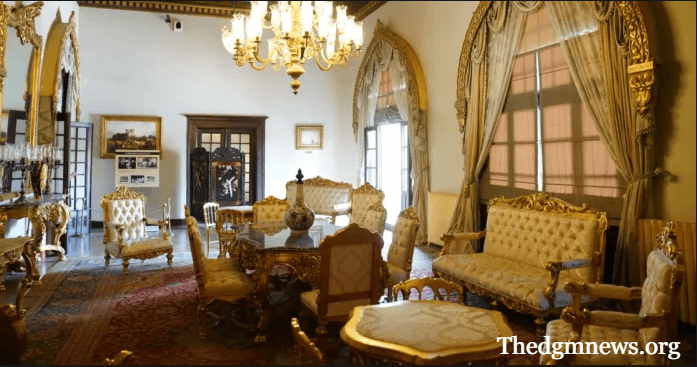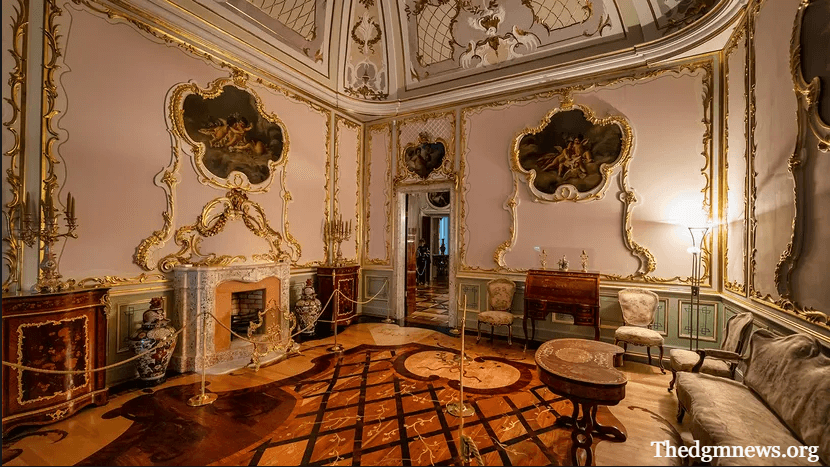Introduction
Catherine the Great, the longest-reigning female monarch of Russia, was a pivotal figure in shaping the nation’s political and cultural landscape during the 18th century.
Her reign was marked by remarkable transformations, and perhaps one of the most visible aspects of her legacy was her patronage of art, culture, and architecture.
Catherine the Great furniture stands as a testament to her refined taste and love for luxury. The opulence of 18th-century furniture, especially during her rule, tells a fascinating story of an empire in its golden age.
In this article, we will explore Catherine the Great furniture, examining the styles, craftsmanship, and materials that defined her era.
From the palaces she built to the collections she amassed, the furniture she surrounded herself with reflected not only her personal taste but also the grandeur of the Russian Empire.
The Rise of Rococo and Neoclassical Styles

During the 18th century, Europe saw a shift in artistic and architectural styles, with Catherine the Great furniture embodying a transition between the Rococo and Neoclassical movements. While Rococo was known for its ornate, playful, and asymmetrical designs, Neoclassicism brought a return to symmetry and the classical ideals of antiquity.
Both styles influenced the design of furniture in Russia during Catherine’s reign, reflecting her own evolving tastes and the changing political and cultural environment.
Catherine was known for her interest in European culture and sought to align Russia with the West. She embraced the Rococo style initially, favoring extravagant designs, intricate details, and light pastel colors.
Over time, however, as she sought to assert Russia’s cultural identity, her taste shifted towards the more restrained elegance of Neoclassicism, which focused on simplicity, order, and harmony.
Furniture for the Empress: Luxury and Comfort
When Catherine the Great furniture is mentioned, it’s impossible not to think of the lavish and majestic pieces that adorned her palaces.
Catherine’s taste was refined, and she spared no expense when it came to furnishing her residences.
The Winter Palace in St. Petersburg, one of her most famous residences, housed an array of exquisite furniture that blended both the Rococo and Neoclassical styles.
The furniture in her palaces was designed not only for function but also for display. It was a symbol of her power, wealth, and sophistication.
Some of the most prominent furniture pieces from the era included chairs, sofas, and tables made from fine woods such as mahogany, walnut, and oak.
These were often intricately carved, gilded, or veneered with precious materials like tortoiseshell and ivory.
Catherine was also known for commissioning custom-made furniture to suit her taste and the architectural needs of her palaces. She favored grand, upholstered furniture, particularly pieces that could be both luxurious and comfortable for long periods of use.
The opulence of Catherine the Great furniture was evident in every room of her palaces, where every item served to impress visitors and demonstrate the greatness of her empire.
The Influence of French Craftsmanship
One of the key influences on Catherine the Great furniture was French craftsmanship. Catherine’s admiration for French culture, especially during the early years of her reign, led her to seek out French artisans and designers.
She invited several talented French furniture makers to her court, including Jean-Baptiste Lemoine, a renowned French cabinetmaker.
Lemoine and other French craftsmen contributed to the creation of some of the most exquisite pieces in Catherine’s collection. These artisans brought with them the latest styles and techniques from France, which helped elevate the design of Russian furniture.
The furniture created during this period featured intricate marquetry, detailed carvings, and rich materials, all hallmarks of French Rococo and Louis XVI styles.
The influence of French taste was so strong during Catherine’s reign that many of the pieces in her collections still reflect this aesthetic today.
French-influenced pieces were often seen in the more public rooms of the palaces, where they were used to entertain foreign dignitaries and show off Russia’s cultural refinement.
The Empress’s Favorite Pieces
Throughout her reign, Catherine amassed an extensive collection of furniture, some of which became iconic symbols of her reign. The furniture in her private chambers was particularly telling of her personal style preferences.
For instance, one of the most famous pieces is a Catherine the Great furniture set made of lacquered wood with gold accents. These pieces were often characterized by their intricate floral designs and rich color schemes, including shades of blue, gold, and white.
The grand furniture pieces in her official rooms, such as the throne room and audience chambers, were similarly extravagant. One of the most famous examples is the Catherine the Great throne, a magnificent piece that combines rich upholstery with gilded carvings.
The throne was not only a functional piece of furniture but also a visual representation of her imperial power. It served as a focal point for important ceremonies, reinforcing Catherine’s status as the ruler of one of the world’s greatest empires.
The Role of Furniture in Russian Cultural Identity
During Catherine’s reign, furniture became more than just a tool for comfort; it was a way to showcase the identity of the Russian Empire. As a monarch, Catherine was keen to project an image of Russia as a powerful, cultured, and modern nation.
The opulence of Catherine the Great furniture played a key role in this effort. Her palaces were a reflection of the empire’s strength, its ties to European culture, and its status as a leading power in Europe.
By commissioning and displaying luxurious pieces of furniture, Catherine not only elevated the prestige of her court but also sought to align Russian culture with the artistic trends of the West.
This cultural ambition was not limited to the decoration of her palaces but extended to other areas, such as literature, painting, and architecture.
The furniture she surrounded herself with became part of a larger narrative that framed Russia as a country at the forefront of European civilization.
Legacy of Catherine the Great Furniture
The legacy of Catherine the Great furniture endures to this day. Many of the pieces she commissioned are housed in museums around the world, providing us with a glimpse into the opulence of 18th-century Russian court life.
Today, these pieces are considered some of the finest examples of European craftsmanship, embodying the transition from Rococo to Neoclassical design.
The Catherine the Great furniture collection continues to inspire modern designers, who look to the past for inspiration. The intricate marquetry, gilded details, and lavish upholstery used in her time have become synonymous with luxury and refinement.
The furniture of Catherine’s era represents an idealized vision of imperial Russia, one of sophistication, grandeur, and power.
Conclusion
The furniture of Catherine the Great serves as a powerful symbol of the Empress’s reign and a reflection of 18th-century European artistry.
From the Rococo-inspired pieces to the more restrained Neoclassical designs, the furniture from her era is a testament to her refined taste and her efforts to align Russia with the cultural movements of the West.
Through her patronage of the arts, Catherine ensured that her reign would be remembered not just for its political achievements but for its contribution to the world of art and design.
The legacy of Catherine the Great furniture continues to inspire awe today. Each piece tells a story of power, opulence, and sophistication, inviting us to imagine the grandeur of the Russian Empire during one of its most prosperous and culturally influential periods.



